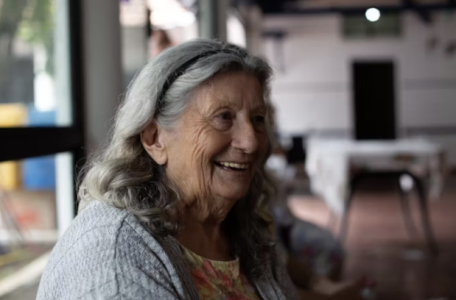This low-effort habit could help clear your mind and lift your mood
- Replies 0
In a world where we’re constantly chasing what’s next, some people are choosing to slow down.
Instead of fixating on big dreams or long to-do lists, they’re turning inward.
It’s not about reaching for more—it’s about recognizing what’s already yours.
And this simple mindset shift might just change how you feel about your life.
It’s called a reverse bucket list, and it flips the classic “things I want to do before I die” model on its head.
Instead, this approach is all about listing the things you’ve already accomplished—no matter how big or small.
Therapists describe it as a mindfulness exercise that taps into gratitude, personal wins, and emotional resilience.
It’s being used by people who want to reconnect with their progress instead of drowning in what they haven’t done yet.

“So many of us have ‘success amnesia’,” said Dr. Sue Varma, author and psychiatry professor at NYU.
She notes that we often forget our wins because we’re too focused on the next milestone.
Whether it’s a promotion, healing from loss, or learning a new skill, the reverse bucket list highlights what you’ve already done well.
And that alone can boost mood, confidence, and motivation—without needing to chase anything new.
Gratitude isn’t just feel-good fluff—it’s science-backed mental health fuel.
Experts say regularly practicing gratitude with a tool like the reverse bucket list can slow down negative thinking patterns.
You begin to savor successes rather than zoom past them in pursuit of something more.
And as author Ken Honda puts it, “Being content with what you’ve got is instant, and it doesn’t cost you anything.”
This approach is especially powerful for those caught in comparison loops.
Instead of asking what you’re missing, you reflect on what’s meaningful and personal to you.
It helps you spot patterns in your growth, highlight strengths, and anchor yourself in resilience.
From travel memories to emotional breakthroughs, the list becomes a mirror of everything you’ve already climbed.
But therapists caution that it’s not for everyone, at least not right away.
For those struggling with self-criticism or unresolved trauma, looking back may feel triggering instead of uplifting.
And if you tie your identity too tightly to your past wins, it can lead to stagnation or pressure to always be achieving.
Like any tool, its power depends on how and when you use it.
So how do you actually make one? Experts suggest choosing categories like career, relationships, health, hobbies, or travel, and jotting down anything that sticks out.
You can reflect on challenges you’ve overcome, skills you’ve gained, or even moments of unexpected joy.
You might be surprised how meaningful the small stuff feels once it’s on the page.
If you’re drawing a blank, consider looking through photos, asking loved ones, or even reviewing social media posts.
Prompt yourself with ideas like: “What moment made me proud?” or “When did I step outside my comfort zone?”
Don’t worry about impressing anyone—this list is for your reflection, not your resume.
And don’t judge yourself if your list doesn’t look like someone else’s highlight reel.
What matters most is pausing long enough to recognize what you’ve already done.
That reflection can then shape what comes next, from a place of joy—not pressure.
Think of it as hitting the brakes before hitting the gas again.
In a culture that pushes “what’s next,” this might be the gentlest way to say, “I’m already enough.”
Also read:

Have you ever made a reverse bucket list—or thought about what you’ve already accomplished instead of what’s left to do? What would be the first thing you’d add to yours? Share your thoughts in the comments—we’d love to hear the moments that shaped you.
Instead of fixating on big dreams or long to-do lists, they’re turning inward.
It’s not about reaching for more—it’s about recognizing what’s already yours.
And this simple mindset shift might just change how you feel about your life.
It’s called a reverse bucket list, and it flips the classic “things I want to do before I die” model on its head.
Instead, this approach is all about listing the things you’ve already accomplished—no matter how big or small.
Therapists describe it as a mindfulness exercise that taps into gratitude, personal wins, and emotional resilience.
It’s being used by people who want to reconnect with their progress instead of drowning in what they haven’t done yet.

A simple mindset shift might just change how you feel about your life. Image source: Tatiana Zanon / Unsplash
“So many of us have ‘success amnesia’,” said Dr. Sue Varma, author and psychiatry professor at NYU.
She notes that we often forget our wins because we’re too focused on the next milestone.
Whether it’s a promotion, healing from loss, or learning a new skill, the reverse bucket list highlights what you’ve already done well.
And that alone can boost mood, confidence, and motivation—without needing to chase anything new.
Gratitude isn’t just feel-good fluff—it’s science-backed mental health fuel.
Experts say regularly practicing gratitude with a tool like the reverse bucket list can slow down negative thinking patterns.
You begin to savor successes rather than zoom past them in pursuit of something more.
And as author Ken Honda puts it, “Being content with what you’ve got is instant, and it doesn’t cost you anything.”
This approach is especially powerful for those caught in comparison loops.
Instead of asking what you’re missing, you reflect on what’s meaningful and personal to you.
It helps you spot patterns in your growth, highlight strengths, and anchor yourself in resilience.
From travel memories to emotional breakthroughs, the list becomes a mirror of everything you’ve already climbed.
But therapists caution that it’s not for everyone, at least not right away.
For those struggling with self-criticism or unresolved trauma, looking back may feel triggering instead of uplifting.
And if you tie your identity too tightly to your past wins, it can lead to stagnation or pressure to always be achieving.
Like any tool, its power depends on how and when you use it.
So how do you actually make one? Experts suggest choosing categories like career, relationships, health, hobbies, or travel, and jotting down anything that sticks out.
You can reflect on challenges you’ve overcome, skills you’ve gained, or even moments of unexpected joy.
You might be surprised how meaningful the small stuff feels once it’s on the page.
If you’re drawing a blank, consider looking through photos, asking loved ones, or even reviewing social media posts.
Prompt yourself with ideas like: “What moment made me proud?” or “When did I step outside my comfort zone?”
Don’t worry about impressing anyone—this list is for your reflection, not your resume.
And don’t judge yourself if your list doesn’t look like someone else’s highlight reel.
What matters most is pausing long enough to recognize what you’ve already done.
That reflection can then shape what comes next, from a place of joy—not pressure.
Think of it as hitting the brakes before hitting the gas again.
In a culture that pushes “what’s next,” this might be the gentlest way to say, “I’m already enough.”
Also read:
- Is your diet increasing your risk for cancer? Shocking new findings on intermittent fasting!
- Is reality TV "harmful"? We asked 5 experts—including an ex-reality TV participant
Key Takeaways
- The reverse bucket list is a reflection tool that helps people focus on what they’ve already accomplished instead of what they still want to do.
- Experts say it promotes gratitude, reduces anxiety, and boosts motivation by shifting attention away from comparison and pressure.
- It's especially helpful for identifying resilience, processing personal growth, and reconnecting with what really matters.
- While not for everyone in every situation, the practice can be powerful when done intentionally and with compassion.






